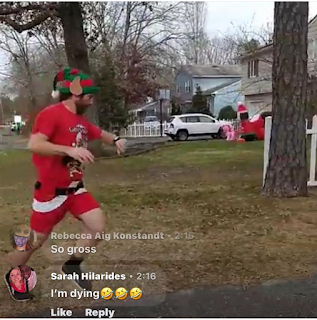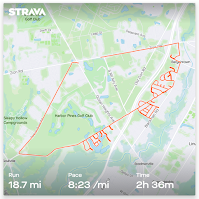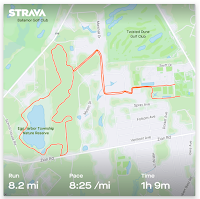I usually plan out my blog posts. I usually don’t put together a formal outline, but I at least have an idea of one in my head and will put at least a few notes or bullet points down on paper prior to beginning to write just to make sure I don’t forget to include any of the major points I intended to cover. This is not one of those posts. Tonight was the first night of running that it finally felt like the temperature dropped after the sunset. I think it was cooler than it has been since early spring this year. It’s strange when it takes a cool run after dark to realize how quickly the seasons are shifting from one to the next. Time doesn’t wait. Night to day, season to season, and year after year. It’s relentless. During this run while thinking about time relentlessly pressing on, I decided I would write this free form, unplanned blog post just to see where it led and what end result would be produced.
The main thing I thought I would write about was how I currently have no races on my schedule and I’m pretty much ok with it. I’m at the point after my last race (almost a month) that I would usually start experiencing some of the post race blues without having the next goal to conquer on my calendar. I’m not really feeling that as much this time or the need to sign up for anything. I’m guessing the reason why is because although I’m not registered for any races as of now, I know I have a race on my agenda next May, the Capital Backyard Ultra (CBU). I earned a guaranteed spot at CBU by winning the Last Squatch Standing this past August. The winner of the 2022 CBU will receive a guaranteed spot on the USA team at the 2022 Big Dog’s Backyard International Satellite Championship. It is a momentous race for me. It is a chance for me to earn a spot to represent the USA in an International competition of the best backyard runners from around the world. It struck me during my run tonight that this could be the most important race of my life. With that thought in my head, I vowed to make the months leading up to it my most focused months of training ever.
If I train hard and smart January through May, I know I’ll be ready for CBU physically. But the mental side of backyards can break you and end your run just as quickly as any physical issue. I was considering a gym membership to increase my running miles starting in January when weather can make outdoor running less enjoyable in my opinion, but I’m not so sure. I began to think that forcing myself out the door in freezing temps and running through slushy streets may help me nurture that determination that’s needed during a backyard ultra to get up and go out for another 4.167 miles when your mind and body may be advising otherwise. I mean that’s all this format is after the physical aspect, just a mental battle between the logical part of your brain that knows this must stop at some point and the other side of your brain that refuses to quit even though your muscles have been relaying the message to your brain that they’re spent.
I can’t explain what it is that keeps other runners going in these backyard races. I’m not even sure what it is for me all the time. I like to think it’s a reflection of my well honed sense of determination. I’m not the greatest or most talented runner, but I am a pretty determined person. I like to think it’s a display of the undefeatable human spirit to not accept defeat even if it seems the mind and body have accepted defeat. I feel that I was on the precipice of that situation a couple times at backyard races. Somehow, I found the will and desire to keep pushing on even when my brain was providing me logical justifications to quit and body parts were signaling their surrender.
I don’t know what will happen at CBU. I hope to have a good day. I hope to run my longest distance ever. I hope to be the last person standing. But hope can be lost quickly during a backyard ultra. The mind can be defeated in unforeseen ways. Some aspects are not in my control. What I can control is my training and my goal for race day. My training will be on point. I am committed to making that happen. My goal is simple, to go out for every loop on the hour until I am either timed out or I am the last person standing.
Scott Snell
9/24/21







































